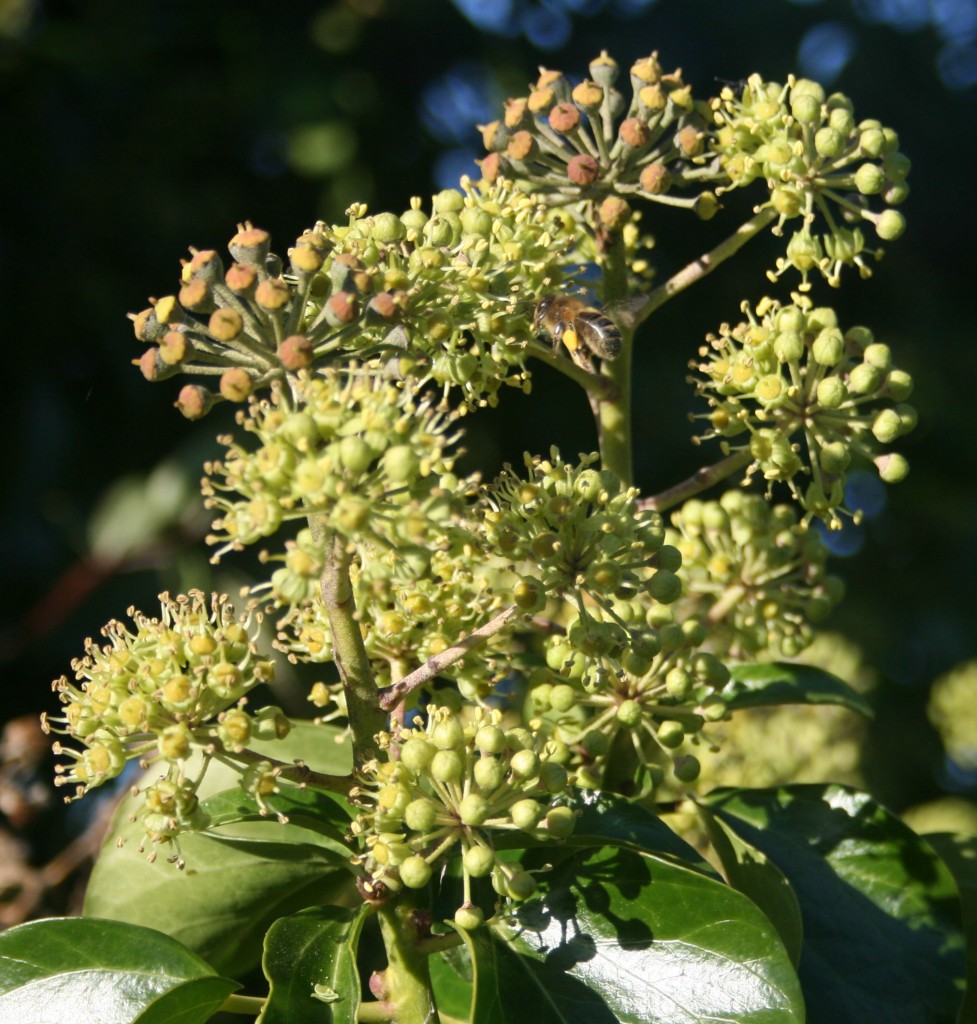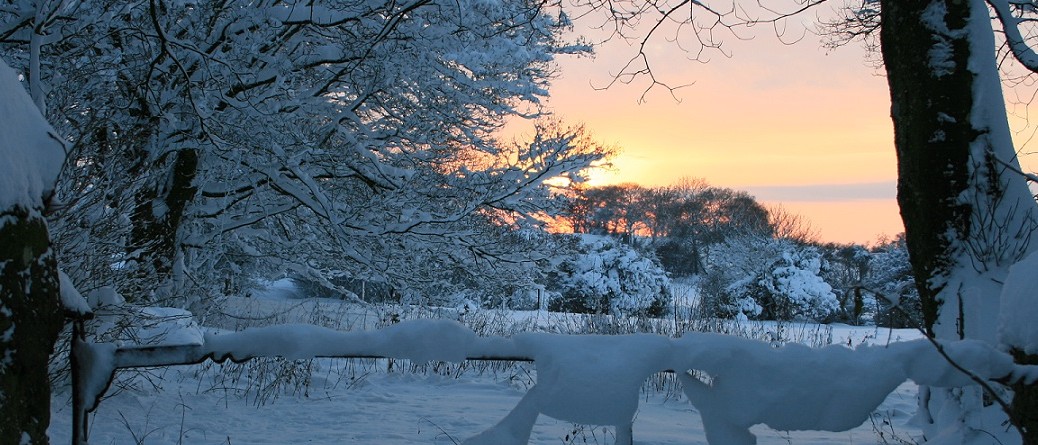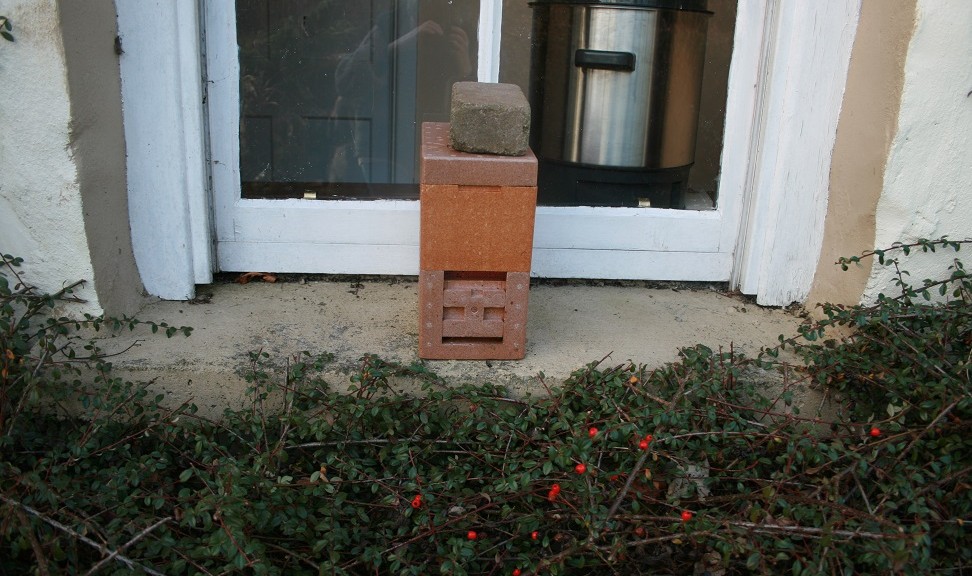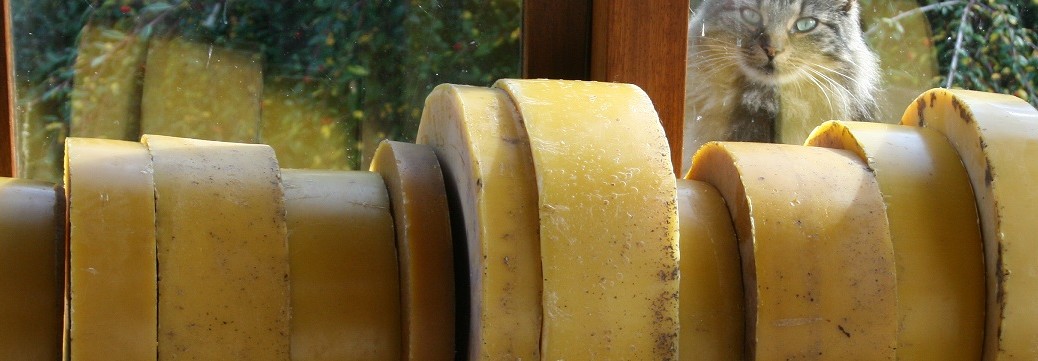Preparations for winter should begin immediately after the honey harvest. Treat your bees and feed them as soon as possible or they might not be there to greet you come spring. Continue reading Wintering Bees
Category Archives: Things to do in October
Michaelmas – Bees and Wintering
Michaelmas, or the Feast of St.Michael, is one of the four quarter days which mark the changing of the seasons.
The four quarter days are:
- Lady day or the Feast of the Annunciation 25th March;
- Midsummer’s day around 25th June;
- Michaelmas 29th September;
- Christmas 25th December – lest we forget – fat chance.
They all approximately coincide with either an equinox or a solstice. Continue reading Michaelmas – Bees and Wintering
How to unite bees – the Newspaper Method
The most common scenarios when you might want to unite two colonies of bees include:
- When one of them is queenless;
- When one of them has a vile queen and you are about to make them queenless;
- When one or both colonies are too weak in the approach to winter.
Most bee books will tell you to unite the two using the ‘newspaper method’ Continue reading How to unite bees – the Newspaper Method
November Ivy
It’s amazing that the ivy came into bloom in early August this year and it is still flowering and the bees are working it 3 months later!
Admittedly the earliest flowering ivy was a few miles downhill from here and we are on up on the north face of a chilly hill where most things are late, however – it’s still quite a spread you must admit.
Every warm day now, the bees are all over it gathering pollen and whatever nectar there may be. Spot the bee – click on the photo below for a better view.

Some of the flowers in this picture were pollinated some time ago and you can see the berries developing, russet now but black later. Some are still in full bloom and others are only buds. These last will almost certainly not open at all.
How to overwinter an Apidea
At the end of the summer, it is not always possible to find a colony in need of a new queen, especially after a summer as good as this one (2014) when it seems all the queens mated well. Nor is it always possible to find colonies with sufficient sealed brood to make up a nuc without weakening them unduly before winter. So what to do with those last, late queens in your Apideas?
Here is the quandary I found myself in this year: I had several sad little queenless Apideas and two other strong ones, each with five frames (feeder removed) and with good laying queens in them. I can never quite face shaking the poor queenless bees out, nucs weren’t possible and there’s nothing so sad as watching an Apidea dwindle its way into winter with laying workers and a bellyful of slugs.
So here’s the recipe: Continue reading How to overwinter an Apidea
How to take a crop of Ivy honey
‘Why would you want to?’ says you. Well the news on the streets is that it’s only a matter of time before it will be announced that research into the health benefits of ivy honey has discovered it to be the best thing since Manuka – I’m serious. Click here for more about ivy honey.

However, taking a crop of ivy honey is problematic for several reasons:
- It sets in the comb even more quickly than rape honey so is difficult to extract;
- It is the last honey flow of the season and the bees build up on it and rely on it for their winter stores;
- By the time you take it off it could be too late to feed before winter sets in.
So, here’s what you do:
Acetic Acid Fumigation
If you have old brood frames it is always a good idea to fumigate them before using them again to kill Nosema spores and wax moth. However, be sure they don’t come from a hive where the bees died of AFB. If you aren’t sure, or if frames contain patches of old sealed brood it’s probably best to burn them.
If the wax is old and very black it is best to strip these frames down and add fresh foundation in the spring – you’ll seldom find AFB in nice clean frames. Continue reading Acetic Acid Fumigation
Wax-moth Hell
This is the time of year for scraping down the stack of equipment that got thrown into the shed during the active season – I know this because that’s what I’ve been doing this afternoon. Once started I realise why it takes so long to get down to it because it really isn’t nice. Not nice at all.
There should be a course -‘Entomology for Beekeepers’ because the assortment of creepy crawlies to be found in the detritus at the bottom of a beehive is bewildering and horrifying – like Doctor Who with maggots. Continue reading Wax-moth Hell
Beeswax Mountain – Candle Making
Beeswax is a by-product of beekeeping and there are dozens of things you can do with it. Each time you visit your bees and scrape those bits of brace comb off the top bars or the crownboard – instead of flicking them into the undergrowth, save them in a bucket and when you have enough you can render it into blocks of clean wax which can be stacked in a cupboard and in a very short while it will be bursting out the door.
I’ve been doing that for many years now and the cupboard is full of wobbly stacks of it so the time has come to do something with it. The options include the following: Continue reading Beeswax Mountain – Candle Making
Purple Moor Grass
For those people lucky enough to live close to bogs and/or hills – if you fancy making your own skep, purple moor grass (Molinia caerulea) is ready to gather from October onwards. Weather depending. Continue reading Purple Moor Grass






